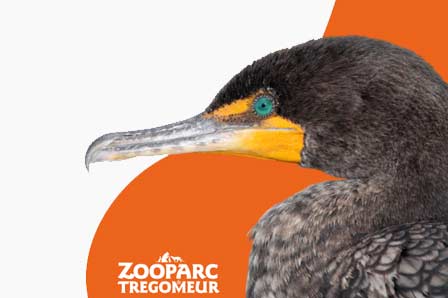
GREAT Cormorant
Class: Birds
Order: Suliformes
Family: Phalacrocoracidae
Genus: Phalacrocorax
Species: Carbo
Geographic distribution: Almost worldwide
Habitat: Coasts, estuaries, large rivers
Size / Wingspan: 100 cm / 130 to 160 cm
Lifespan: 20 years
Weight: 2 to 3 kg
Sexual Maturity: 3-4 years
Incubation: 29 to 31 days
Clutch: 3 to 4 eggs
Diet: Fish, aquatic invertebrates, etc.
Protection Status: IUCN CR Status – Least Concern
Description
The great cormorant feeds mainly on fish, diving to capture its prey with its beak and capable of staying underwater for over a minute. Unlike most other water birds, the great cormorant’s plumage is not totally waterproof. After several dives, it mustdry its wings by exposing them to the wind or sun.
cTHREATS AND PRESERVATION
The great cormorant was once persecuted by humans because of its competition with fishermen. Thanks to conservation efforts, its numbers are now increasing and the species’status has stabilized.